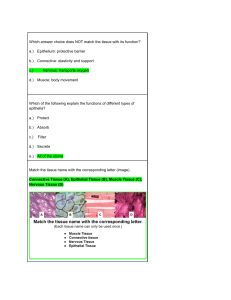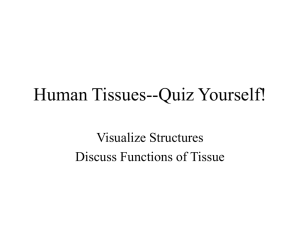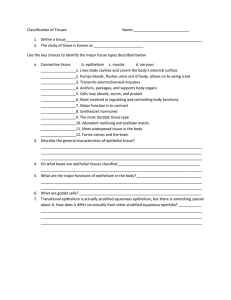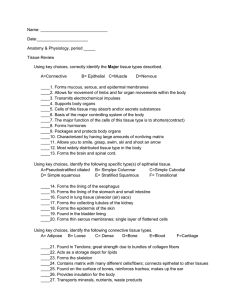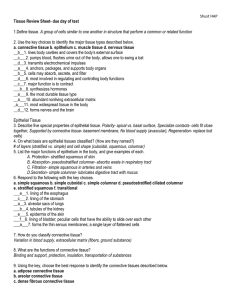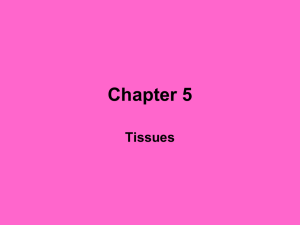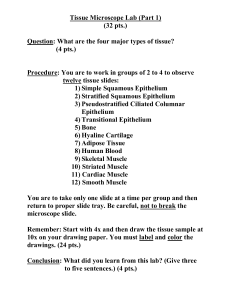Tissue Structure and Function
advertisement
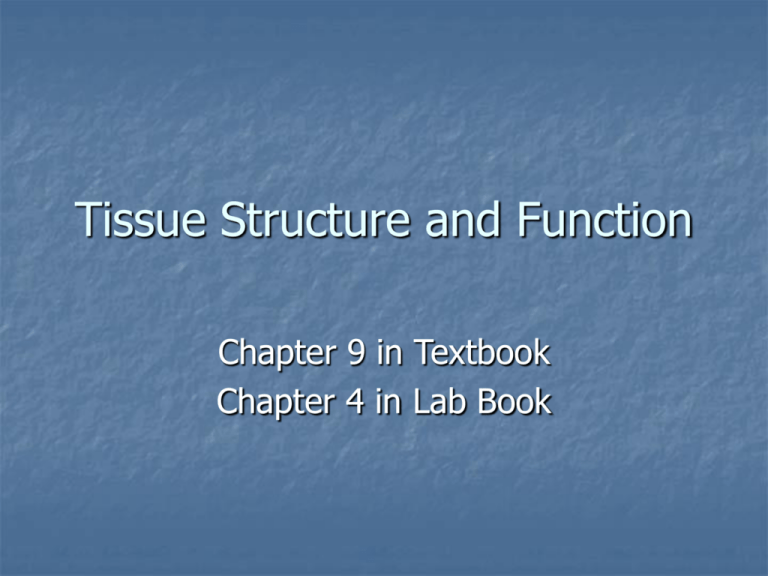
Tissue Structure and Function Chapter 9 in Textbook Chapter 4 in Lab Book Tissue An aggregation of cells and cell products of similar structure and embryonic origin that perform a common function Histology The study of tissues, especially their structure and arrangement Basic Tissue Types Epithelial Connective Muscle Nervous Organ An aggregation of tissues organized into a functional unit System Organs working together as functional units Epithelial Tissue Sheet-like layer of cells Cover surfaces or line cavities Often has glandular cells for fluid secretion Endothelium Epithelium that lines heart, blood vessels and lymphatic vessels Epithelial Types Simple Epithelium Simple squamous – inside blood vessels Simple cuboidal – lines ducts, ex. Kidney tubules, mucous glands Simple columnar – lining of small intestine Pseudostratified Columnar – trachea, bronchi Figure 09.9a Figure 09.9b Pseudostratified Columnar Epithelial Types Stratified Epithelium Stratified squamous - skin Transitional – urinary tract and bladder Connective Tissue Tissue that connects Loose connective tissue Dense connective tissue adipose (fat) cartilage Bone Vascular tissue Erythrocytes: Red Blood Cells – carry oxygen Leucocytes: White Blood Cells – part of the immune system Platelets - clotting Adipose Figure 09.11c Figure 09.11d Erythrocytes: Red Blood Cells Leucocytes: White Blood Cells Platelets Muscle Tissue Types Smooth Muscle (=Involuntary Muscle) Skeletal Muscel (=Voluntary Muscle) Ex. Small intestine Ex. Large muscles of body Cardiac Muscle Skeletal Smooth Cardiac Nervous Tissue Includes Nerves, Spinal Cord, Brain Cells are called neurons Neuron

